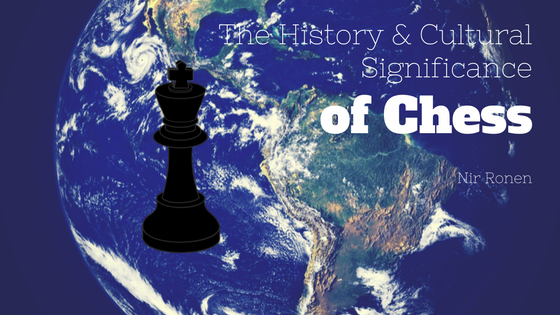Modern chess tournaments may not have come around until 1851, but believe it or not, this classic game of strategy has been in existence for over a thousand years, since it most likely originated in India before the sixth century AD. The earliest origins of chess are a little murky, as historians must rely on a limited supply of ancient texts and even fewer chess pieces still in existence from this era. Historians know with certainty, however, that chess has a long and storied history and the more modern form of chess that made its way to Europe was being played in Persia as early as 1,350 years ago. It would be be virtually impossible to detail the entire history of chess, but I want to take a look back and explore how it came to be the popular form of entertainment it is today, and how its reach has expanded into countries all around the world. So I have here an abridged timeline of chess, starting with its earliest days.
Early days
The earliest form of chess played in India was known as chaturanga, which translates to “four divisions,” referring the the four divisions of the military: infantry, cavalry, elephantry, and chariotry. As with modern chess, the different pieces had different levels of significance and the game was won by capturing the most important piece (in modern chess, the king piece). Chess gradually became very popular in the Arab world, where it became known as shatranj. As with modern chess, this ancient game was played on a board of eight squares by eight squares, but the board was not checkered like modern chess boards. The pieces were arranged like modern pieces are, and although their identities had some differences from modern pieces, they had a lot of similarities as well.
Most of our modern chess pieces can trace their roots back to these early pieces, such as the rook and the knight which had the exact same moves they do today. The queen and bishop of ancient chess were instead the king’s advisor and an elephant, respectively, and had less power than their successors. Overall though, ancient chess had a lot of similarities with the modern game in terms of strategy and objective, so we can see how the game evolved.
East Asia
Chess in China may actually predate some ancient variants of chess, such as those played in Persia, Arabic countries, Thailand, and Burma. While some historians think it could have even been in existence before the ancient Indian version and some Chinese texts claim this as well, it’s more commonly believed that Chinese Chess was derived from the Indian game chaturanga. Ancient Chinese chess was called xiangqi and it looked a lot different than its western counterpart. In fact, it looked more like checkers than chess, as wooden pucks inscribed with Chinese characters were used in place of the pieces we’re used to and the board was divided by an open space in the middle with X’s on both sides. As different as this board may look, however, it was (and still is, in China) played in much the same fashion as modern western chess.
After gaining popularity in China, chess made its way to Korea, and then Japan. Korean chess, called janggi, looks pretty similar to Chinese chess but is played quite differently. There is no space, or “river,” in the middle of the board, as there is with xiangqi, and the moves of the pieces are much different than they are in the Chinese game. The Japanese version of chess, called shogi, gets its inspiration from the Chinese, Persian, and Thai games and reinvented ideas from these games into a style that is uniquely its own. Three features that set this game apart are that the captured pieces may be reused by the captor, pawns can move one square straight ahead and capture as they move, and the board is 9×9 with two “queens” (in this case, golden generals).
Europe
Eventually, chess made its way from Asia to Europe and remained virtually unchanged for nearly a thousand years before taking on its modern form. The pieces changed shape and identity, but the rules remained the same. It wasn’t until 1497 (according to earliest known records) that the new rules came out in print in northern Italy and Spain. The game of chess under these new rules was called new chess, the queen’s chess, or chess of the mad queen. To say that chess was a huge hit in Europe would be an understatement; within a generation, the new chess had completely eclipsed the old chess in popularity.
The most significant changes to the new form of chess is that the pieces were given more power. The queen was now second in importance only to the king, with the ability to move any number of spaces forward, backward, left, right or diagonally.
Chess Today
The chess we know and love today, referred to sometimes as western chess or international chess, has not changed since it got its new rules over 500 years ago. However, it’s important to note that the first modern chess tournament was not held until 1851 in London, won by the German Adolf Anderssen who became a chess master of his day. Today, chess competitions are an international phenomenon, with 188 countries involved in the World Chess Federation (FIDE). While ancient forms of chess are still played in Asia and new variants are still being construed by game lovers around the world, I think it’s safe to say that modern chess isn’t going anywhere.

